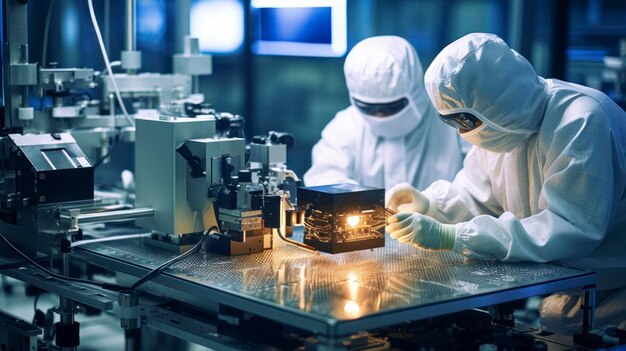ursustel.net – In the ever-evolving landscape of industrial production, the factory is no longer just a site of mass production; it has become a laboratory for innovation and experimentation. With the advent of new technologies, manufacturers are increasingly viewing their factories as testbeds for cutting-edge solutions that can enhance efficiency, sustainability, and competitiveness. This article explores the transformative role of new technologies in the factory setting, highlighting how experimentation is driving the Fourth Industrial Revolution, or Industry 4.0.
The Evolution of the Factory:
Historically, factories were designed for one purpose: to produce goods at scale. The Industrial Revolution brought about the assembly line, and since then, factories have been synonymous with mass production. However, the digital age has introduced a new paradigm where factories are not only about quantity but also about quality, customization, and innovation. The integration of advanced technologies is reshaping the factory floor, turning it into a dynamic environment where new ideas are constantly being tested and refined.
Key Technologies Transforming Factories:
Several technologies are at the forefront of this transformation, including:
- Internet of Things (IoT): IoT devices are revolutionizing the factory by enabling real-time data collection and analysis. Sensors and smart devices embedded in machinery provide insights into performance, maintenance needs, and potential inefficiencies, allowing for predictive maintenance and optimized operations.
- Artificial Intelligence (AI) and Machine Learning: AI and machine learning algorithms are being used to analyze vast amounts of data generated within the factory, leading to smarter decision-making. From quality control to supply chain management, AI is enhancing precision and reducing human error.
- Robotics and Automation: Robotics and automation are not new to factories, but advancements in these fields are introducing more sophisticated and collaborative robots (cobots) that work alongside humans. These robots can perform complex tasks, increasing productivity and safety.
- Augmented Reality (AR) and Virtual Reality (VR): AR and VR are changing the way workers interact with machinery and each other. These technologies offer immersive training experiences, remote assistance, and visualization tools that improve process understanding and problem-solving.
- Additive Manufacturing: Also known as 3D printing, additive manufacturing is allowing for the production of complex parts and prototypes with greater speed and flexibility. This technology is enabling factories to experiment with new designs and materials, leading to innovative products and reduced waste.
The Role of Experimentation:
Experimentation is crucial in the adoption of these technologies. It allows manufacturers to test new processes, workflows, and systems without disrupting their core operations. By creating dedicated spaces within the factory, such as innovation hubs or pilot lines, companies can safely explore the potential of new technologies and assess their impact on production.
Challenges and Considerations:
While the benefits of experimenting with new technologies are clear, there are challenges to consider. These include the need for a skilled workforce capable of managing and maintaining advanced systems, the security risks associated with increased connectivity, and the significant upfront investment required for technology integration.
Conclusion:
The factory as a laboratory is a powerful concept that encapsulates the spirit of Industry 4.0. By embracing experimentation and leveraging new technologies, manufacturers can unlock unprecedented levels of efficiency, customization, and innovation. As the industrial landscape continues to evolve, those who view their factories as testbeds for the future will be well-positioned to lead the next wave of industrial transformation.
